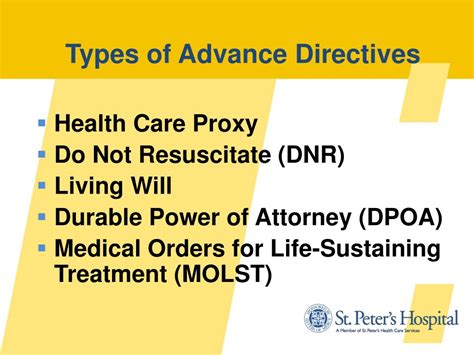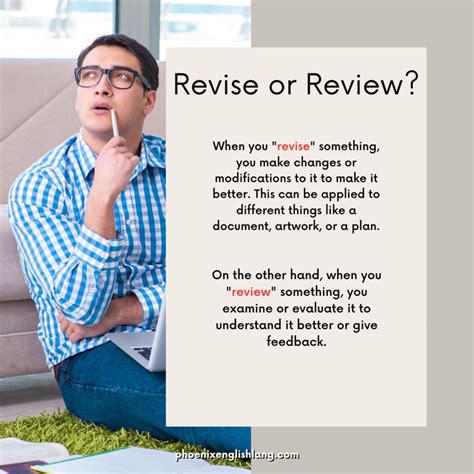Intro
Create a personalized Advanced Directives Form with our comprehensive guide, covering living wills, healthcare proxies, and end-of-life care, ensuring your medical wishes are respected with informed consent and advance care planning.
The importance of having a plan in place for end-of-life care cannot be overstated. With the ever-evolving landscape of medical technology and the increasing complexity of healthcare decisions, it's crucial for individuals to take control of their own healthcare choices. Advanced directives forms are a vital tool in ensuring that one's wishes are respected, even when they are no longer able to communicate them themselves. In this article, we'll delve into the world of advanced directives, exploring their benefits, types, and the steps involved in creating a comprehensive plan.
As we navigate the complexities of modern healthcare, it's essential to consider the what-ifs. What if you were to become incapacitated, unable to make decisions for yourself? What if your loved ones were left to make difficult choices on your behalf, without knowing your true wishes? Advanced directives forms provide a clear and concise way to communicate your desires, alleviating the burden on family and friends. By taking the time to create an advanced directive, individuals can ensure that their autonomy is respected, even in the most challenging of circumstances.
The process of creating an advanced directive can seem daunting, but it's a crucial step in taking control of one's healthcare. With the right guidance, individuals can navigate the various types of advanced directives, selecting the ones that best suit their needs. From living wills to durable powers of attorney, each type of directive serves a unique purpose, and understanding their differences is key to creating a comprehensive plan. In the following sections, we'll explore the ins and outs of advanced directives, providing a clear and concise guide for those looking to take the first step.
Introduction to Advanced Directives

Advanced directives are documents that outline an individual's wishes for end-of-life care, should they become unable to communicate their decisions. These documents provide a clear and concise way to communicate one's desires, alleviating the burden on family and friends. There are several types of advanced directives, each serving a unique purpose. Living wills, for example, outline an individual's wishes for medical treatment, while durable powers of attorney grant a designated individual the authority to make decisions on their behalf.
Benefits of Advanced Directives
The benefits of advanced directives are numerous. By creating a comprehensive plan, individuals can ensure that their autonomy is respected, even in the most challenging of circumstances. Advanced directives also provide peace of mind, knowing that one's wishes will be respected, even if they are no longer able to communicate them. Additionally, advanced directives can help to alleviate the burden on family and friends, who may be left to make difficult decisions without knowing the individual's true wishes.Types of Advanced Directives

There are several types of advanced directives, each serving a unique purpose. Living wills, for example, outline an individual's wishes for medical treatment, while durable powers of attorney grant a designated individual the authority to make decisions on their behalf. Other types of advanced directives include do-not-resuscitate (DNR) orders and medical powers of attorney. Understanding the differences between these types of directives is key to creating a comprehensive plan.
Living Wills
Living wills are documents that outline an individual's wishes for medical treatment, should they become unable to communicate their decisions. These documents provide a clear and concise way to communicate one's desires, alleviating the burden on family and friends. Living wills typically include information such as:- The types of medical treatment the individual wishes to receive
- The types of medical treatment the individual wishes to refuse
- The individual's wishes for end-of-life care
Creating an Advanced Directive

Creating an advanced directive can seem daunting, but it's a crucial step in taking control of one's healthcare. The process typically involves the following steps:
- Determine the type of advanced directive that best suits your needs
- Choose a healthcare agent or proxy
- Outline your wishes for medical treatment
- Review and revise your advanced directive as necessary
Choosing a Healthcare Agent or Proxy
Choosing a healthcare agent or proxy is a critical step in creating an advanced directive. This individual will be responsible for making decisions on your behalf, should you become unable to communicate your wishes. When selecting a healthcare agent or proxy, consider the following factors:- The individual's ability to make decisions on your behalf
- The individual's understanding of your wishes and values
- The individual's willingness to carry out your wishes
Reviewing and Revising Your Advanced Directive

Reviewing and revising your advanced directive is an essential step in ensuring that your wishes are respected. As your circumstances and wishes change, it's crucial to update your advanced directive to reflect these changes. Consider reviewing your advanced directive:
- Every 5-10 years
- After a significant change in your health or circumstances
- After a change in your wishes or values
Common Mistakes to Avoid
When creating an advanced directive, there are several common mistakes to avoid. These include:- Failing to review and revise your advanced directive regularly
- Failing to choose a healthcare agent or proxy
- Failing to outline your wishes for medical treatment clearly and concisely
Conclusion and Next Steps

In conclusion, creating an advanced directive is a crucial step in taking control of one's healthcare. By understanding the benefits and types of advanced directives, individuals can create a comprehensive plan that respects their autonomy and alleviates the burden on family and friends. Remember to review and revise your advanced directive regularly, and consider seeking the guidance of a healthcare professional or attorney to ensure that your wishes are respected.
We invite you to share your thoughts and experiences with advanced directives in the comments below. Have you created an advanced directive? What challenges did you face, and how did you overcome them? Your insights can help others navigate the complex world of advanced directives.
What is an advanced directive?
+An advanced directive is a document that outlines an individual's wishes for end-of-life care, should they become unable to communicate their decisions.
What types of advanced directives are available?
+There are several types of advanced directives, including living wills, durable powers of attorney, and do-not-resuscitate (DNR) orders.
How do I create an advanced directive?
+Creating an advanced directive typically involves determining the type of advanced directive that best suits your needs, choosing a healthcare agent or proxy, outlining your wishes for medical treatment, and reviewing and revising your advanced directive as necessary.
